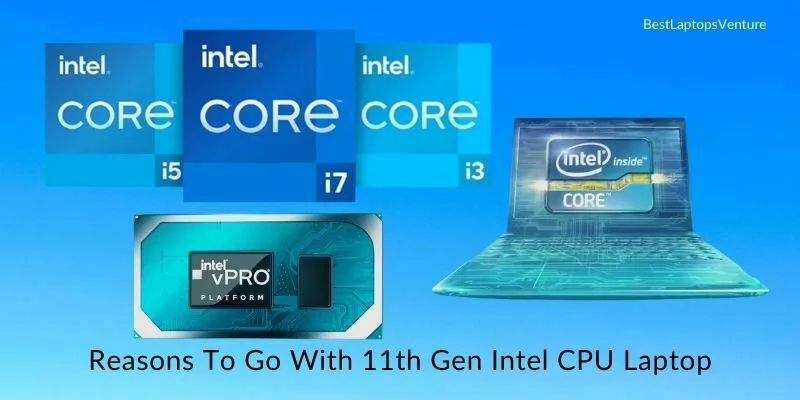![How to Speed Up a Windows Laptop? [12 Easy Steps] 1 How to Speed Up a Windows Laptop](https://bestlaptopsventure.com/wp-content/uploads/2024/02/How-to-Speed-Up-a-Windows-Laptop-1024x576-1.jpg.webp)
Last week one of our readers contacted us and found a prolonged one a few weeks ago and asked him to recommend a laptop.
He said it’s pretty good, but installing the software slows it down significantly. He also said that this is not a high-end laptop.
Still, the laptop has an Intel i3 processor, 8GB RAM, and a 1TB hard drive. It takes 3-5 minutes to open an actual notepad application.
We referred this issue to our technical support team. After 17 hours of proper troubleshooting, we found some problems that slowed our Windows laptop’s performance. They provided a solution and improved performance by over 85%.
Now it only takes a second or two to quickly open a resource-intensive web browser such as Notepad, Windows Search, or even Google Chrome.
The myth is that new laptops are faster than old laptops. It all depends on the components it contains and the garbage it has.
You can format it, remove unnecessary software drives, and reinstall the files you need, tedious and time-consuming.
Still, there is no guarantee that it will happen again. Don’t slow down! Is it not?
12 Easy Ways to Speed Up Windows Laptop
![How to Speed Up a Windows Laptop? [12 Easy Steps] 2 12 Easy Ways to Speed Up Windows Laptop](https://bestlaptopsventure.com/wp-content/uploads/2024/03/12-Easy-Ways-to-Speed-Up-Windows-Laptop-1024x580.jpg.webp)
Most of the steps listed are easy to perform and can take 30-40 minutes to complete all the steps above.
There are a couple of ways to format your PC, upgrade your laptop using SSD, or upgrade your system memory (16GB RAM is enough), which is costly technical skills and toolkits. You may need it.
Consider reading other systems that can increase your Windows laptop’s speed by 40-60% for hardware upgrades.
1. Disable Real-Time Protection
Scanning in Real-time is a feature of Windows 10 that allows Windows Defender to scan your system drive on time. This adds a security layer to the system, but continuous scanning actually uses much faster disk speeds.
If you have an SSD on your laptop, you don’t have to be very careful, but if you have an HDD, you’ll find that Task Manager’s disk usage is always around 90-100%.
To disable real-time scanning in Windows 10, follow these steps:
Windows Defender is a great built-in utility, but what is the purpose of getting a system that is not working correctly?
Using other antivirus software such as Norton, McAfee, or Kaspersky, disable its continuous scanning feature.
2. Use Windows Performance Troubleshooting
![How to Speed Up a Windows Laptop? [12 Easy Steps] 3 Use Windows Performance Troubleshooting](https://bestlaptopsventure.com/wp-content/uploads/2024/03/Use-Windows-Performance-Troubleshooting-1024x580.jpg.webp)
Before looking for other solutions, the first thing to do is the troubleshooting process. The Windows operating system has a unique feature that allows you to scan your system and detect system performance issues.
This method can detect if multiple files are running or file they slow down the system. You can fix it with the click of a button. To troubleshoot, you can do the following:
- Click the Start button to open the control panel.
- Type Troubleshoot in the search box and click Troubleshoot.
- Under System and Security, click Check for performance issues.
3. Add RAM / Virtual Memory to Windows
![How to Speed Up a Windows Laptop? [12 Easy Steps] 4 Add RAM Virtual Memory to Windows](https://bestlaptopsventure.com/wp-content/uploads/2024/03/Add-RAM-Virtual-Memory-to-Windows-1024x580.jpg.webp)
This works best on systems with SSDs but low RAM, but does it also slow down the system when using solid-state drives? Do you have the right?
Basically, all the software you run uses RAM, but you can’t handle such tasks right away if you have limited RAM. This is why Windows operating systems can create virtual memory (paging files) on your hard drive.
If your system has a 7200 RPM hard drive, it’s not as fast as RAM or SSD, but it can handle idle tasks, so you have enough RAM for new or existing tasks that require more resources.
Possible. These steps allow you to add virtual memory to Windows 10.
4. Clean Up Junk Files
One of the many ways to practice servicing your system is to remove junk files from the system.
The Windows operating system has an option called “Disk Cleanup” that allows you to clean up such junk files and automatically remove unwanted caches from your system.
Similarly, Apple MacBook users can view similar content on Mac OS. Also, you can enable a process called Defragmentation on your Windows operating system.
Optimizes all files and automatically optimizes your hard drive in time to clear your junk mail.
Most importantly, you can manually perform end-to-end cleaning and unwanted files such as video, audio, documents, and images. However, in some cases, you may only need to clean the Recycle Bin.
This is also useful on Mac OS. You can do the same on a Mac, but if you’re using an SSD device, make sure you don’t need to configure this process.
5. Update RAM
Now, updating the system RAM seems like an unnecessary process. However, this can be a significant cause of the recession.
If your system has 4-6 GB of RAM and uses a hefty application, it will definitely slow down. In the long run, minor updates can bring significant benefits.
Just look for the best RAM on your e-commerce website. It doesn’t cost much, but it’s not free either.
However, before looking for a laptop, make sure the internet can upgrade your RAM. With Surface Pro, the latest MacBook laptops, and many other ultra-thin ultrabooks that don’t allow RAM upgrades, there’s no other way to upgrade.
The more RAM you add, the more space your system occupies. All applications have more workspace and can speed up your laptop.
6. Upgrade HDD to SSD
As you may know, SSDs or solid-state drives have been introduced instead of HDDs to improve performance. Since it contains no moving parts, component wear is not an issue, and the hard drive will last longer.
The cost of SSDs can be higher than standard hard drive components. But over the years, overall prices have fallen much slower than expected, and you can afford to buy a laptop.
If you’re using a Mac, you don’t have to worry about storage capacity as you already have an SSD drive.
With the latest MacBook Pro, you can increase your SSD storage capacity by 4TB. This is amazing. There are some technical issues with installing new hardware on your system.
It is best to do it with the help of someone who has a deeper understanding of your system.
7. Limit Boot/Startup Procedures
The system boots slowly, but does it work smoothly a few minutes after booting? In this case, it’s the startup program that you should blame, but don’t worry. Disable them to make your system smooth.
Regardless of the operating system (OS), you are using; some applications will start automatically after the system boots.
This can be one of the biggest problems if your system slows down or isn’t as fast as it used to be. Yes, you can reduce the number of applications that open immediately after the system startup.
To do this, you need to open the Task Manager in Windows 10. After booting the system, go to the Startup tab to see how many applications are running on the system.
Some applications you may not have known before. Therefore, we recommend that you delete unnecessary content.
You can run the same process on macOS. Open Activity Monitor and follow a similar function to remove the app.
8. Scan for Viruses
One of the many reasons your system runs slowly can be a virus or malware invading your system. Use Windows Defender or any other external antivirus software downloaded to your Windows operating system.
We recommend that you always have full control of your system before continuing.
Well-known antivirus programs include Norton, McAfee, Kaspersky, Avast Antivirus, and Bitdefender.
You can try the free version of the software and buy the premium version when everything is fine.
9. Power Off Your Laptop Frequently
Users who use their PCs or laptops for work purposes cannot cast a shadow over the fact that they usually do not turn off their PCs. Once you get used to the system, you will never look back.
There is a problem here. The system will continue to function even if the system is in sleep mode or the screen is turned off.
You also need to put the system down and have a process to complete all the work. This is why shutting down the system at least once a week can be a significant factor and even the only reason to notice some changes.
Every time you install a new application, you need to reboot your system so that all the processes run smoothly. It’s time for users to do this.
10. Delete Unnecessary Programs
Another thing you can do to your system is to remove unwanted applications or programs. This is different from deleting junk files.
This process involves permanently removing unused applications. For example, there may be some games on your system that you don’t want to play, and they take up too much space.
Or remove many downloaded browsers for unknown reasons and use only Chrome or Opera.
You can do this through pre-installed programs or programs downloaded and installed from the store or the internet.
The antivirus software is not fully compatible and can slow down your system. Getting rid of it and getting something else is a better choice.
11. Turn off Visual Effects
Many solutions allow you to disable or reduce visual effects. I don’t like to have a more beautiful view on the system screen, but no one likes it. Therefore, it can be reduced in strength or turned off completely.
It requires a long battery life and does not hide the fact that it slows down the system speed. You can control 20 types of visual effects such as the appearance of transparent glass, how to open and close menus, and whether to display shadows.
This is one way to adjust individual settings to limit visual effects.
- Click the Start button to open the control panel.
- Type Show Tools and Tips in the search box and then click Performance Information and Tools.
- Then click to adjust the visual effect.
- Enter administrator privileges, if required.
- Click the Visual Effects tab and click Adjust to see the best performance options.
- Then click OK.
12. Format the System
If none of the above solutions work, this is the final solution. You can reinstall the operating system or restore the factory settings.
Before that, you need to back up all your data and files to your external hard drive. In this way, You will lose no data, and you can get it back after formatting.
In this type of case, all malware (if any) or errors are removed and behave like new malware. Similarly, make sure all drives and operating systems are updated correctly. Then you can restore all system files.
Yes, this is a straightforward process, but sometimes this issue should stay for a long time.
Conclusion: How to Speed Up a Windows Laptop?
These are some of the above methods for speeding up your system or laptop in the best possible way. Some other options you can try are to reduce the visual effects of the design from the settings.
If you are a regular user and you don’t mind, you can take this measure to improve system performance.
The conclusion is simple: the more data and files you enter into your system, the slower it will be over time.
Proper maintenance and maintenance are required to prevent long-term accidents. Burning money, adding SSDs, adding RAM, and reinstalling the operating system may not be what you want.
Therefore, prevention is better than treatment and can be implemented here.

![9 Best Laptop For 3Ds Max rendering in April 2024 [Expert Recommended] 9 Best Laptop For 3ds Max rendering](https://bestlaptopsventure.com/wp-content/uploads/2024/03/best-laptop-for-3ds-max-rendering.jpg.webp)

![9 Best Laptops for SolidWorks in April 2024 [Expert Recommended] 11 Best Laptops for SolidWorks](https://bestlaptopsventure.com/wp-content/uploads/2024/03/best-laptops-for-solidworks.jpg.webp)
![9 Best 11 inch Laptops Under $500 in April 2024 [Expert Recommended] 12 Best 11 inch Laptops Under $500](https://bestlaptopsventure.com/wp-content/uploads/2024/03/Best-11-inch-laptops-under-500-1024x536-1.jpg.webp)
![9 Best Laptops For Physics Students in April 2024 [Expert Recommended] 13 Best Laptop For Physics Student](https://bestlaptopsventure.com/wp-content/uploads/2024/04/best-laptop-for-physics-student.jpg.webp)
![How to Take a Screenshot on an ASUS Laptop? [Easiest Ways] 14 How to Take a Screenshot on an ASUS Laptop](https://bestlaptopsventure.com/wp-content/uploads/2024/03/How-to-take-a-screenshot-on-an-asus-laptop.jpg.webp)

![9 Best Laptops For Notary Signing Agents in April 2024 [Expert Recommended] 16 Best Laptop For Notary Signing Agents](https://bestlaptopsventure.com/wp-content/uploads/2024/04/best-laptop-for-notary-signing-agents.jpg.webp)

